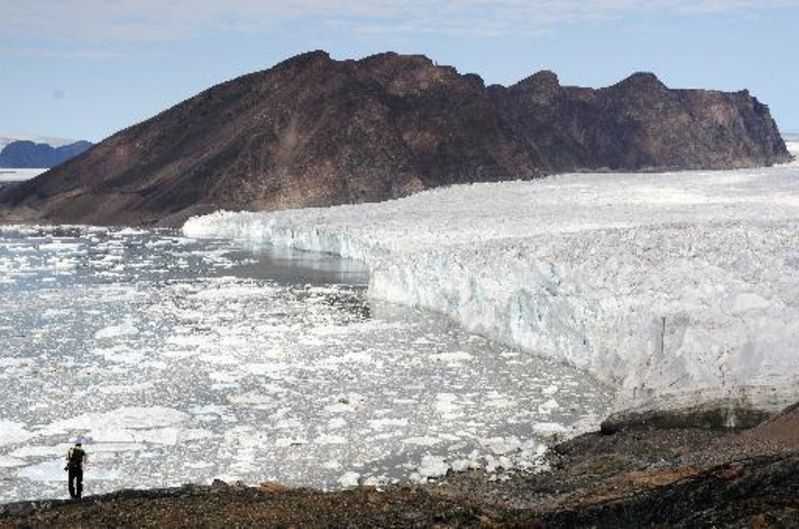Study: Greenland ice melting four-fold faster than decade ago
27 January, 2019

Greenland’s melting ice, which causes sea levels to rise, disappeared four times faster in 2013 than in 2003 and is noticeable across the Arctic island, not just on glaciers, researchers warned on Tuesday.
“While 111 cubic kilometers of ice disappeared per year in 2003, 10 years later this figure had almost quadrupled to 428 cubic kilometers,” the Technical University of Denmark (DTU) Space Lab said in a statement.
Its researchers contributed to a study on changes to Greenland’s ice sheet, published in the U.S. journal Proceedings of the National Academy of Sciences (PNAS).
“These are notable and surprising changes we are seeing in the ice melt pattern,” DTU professor Shfaqat Abbas Khan said.
Until now, most of Greenland’s ice melt was observed on the ice cap, predominantly on the glaciers in the island’s northwest and southeast.
But most of the ice loss from 2003 to 2013 was from Greenland’s southwest region, which is largely devoid of large glaciers.
Michael Bevis, a professor at Ohio State University and lead author of the PNAS paper, said the ice now appeared to be melting from the surface mass “inland from the coastline.”
That means that in the southwestern part of Greenland, growing rivers of water are streaming into the ocean.
“We knew we had one big problem with increasing rates of ice discharge by some large outlet glaciers,” Bevis said.
“But now we recognize a second serious problem: Increasingly, large amounts of ice mass are going to leave as meltwater, as rivers that flow into the sea.”
He warned this would have major implications, causing additional sea level rise.
“We are watching the ice sheet hit a tipping point,” he said, which would condemn the entire giant ice block to melting over a time scale of hundreds, or several thousand, years.
The Greenland ice sheet — up to 3 kilometers thick — contains enough frozen water to raise global sea levels some 6 meters.
While the amount varies from region to region, sea levels rose worldwide by an average of 20 centimeters in the 20th century. They are currently rising by about 3.3 millimeters per year.
Source:
TAG(s):
